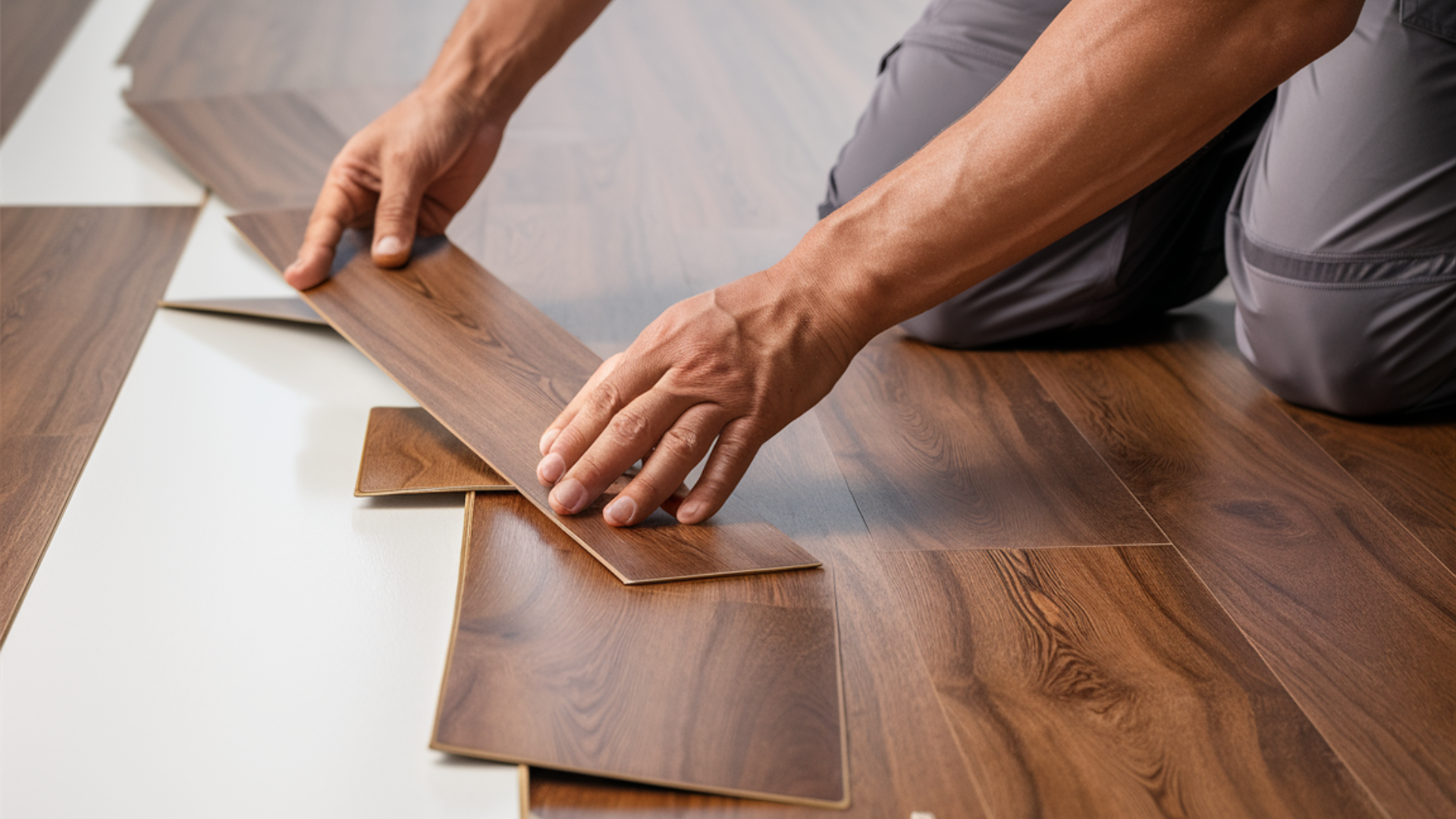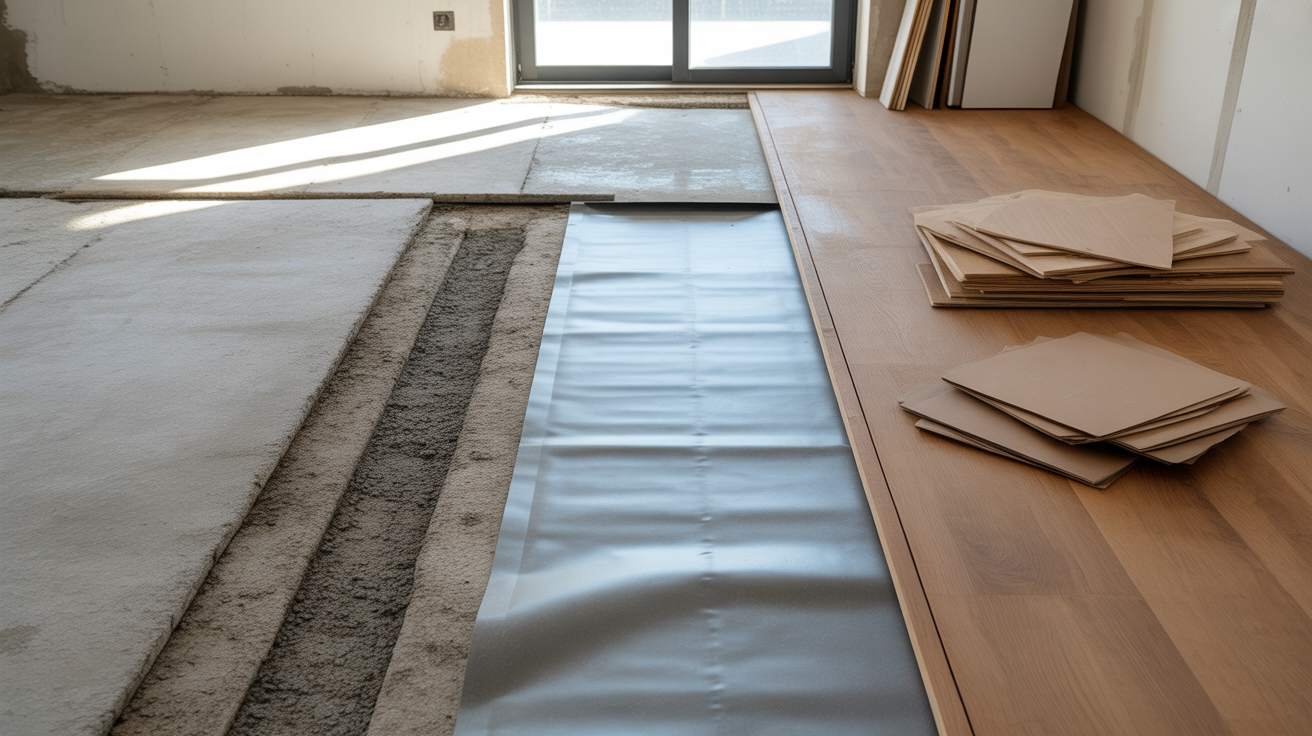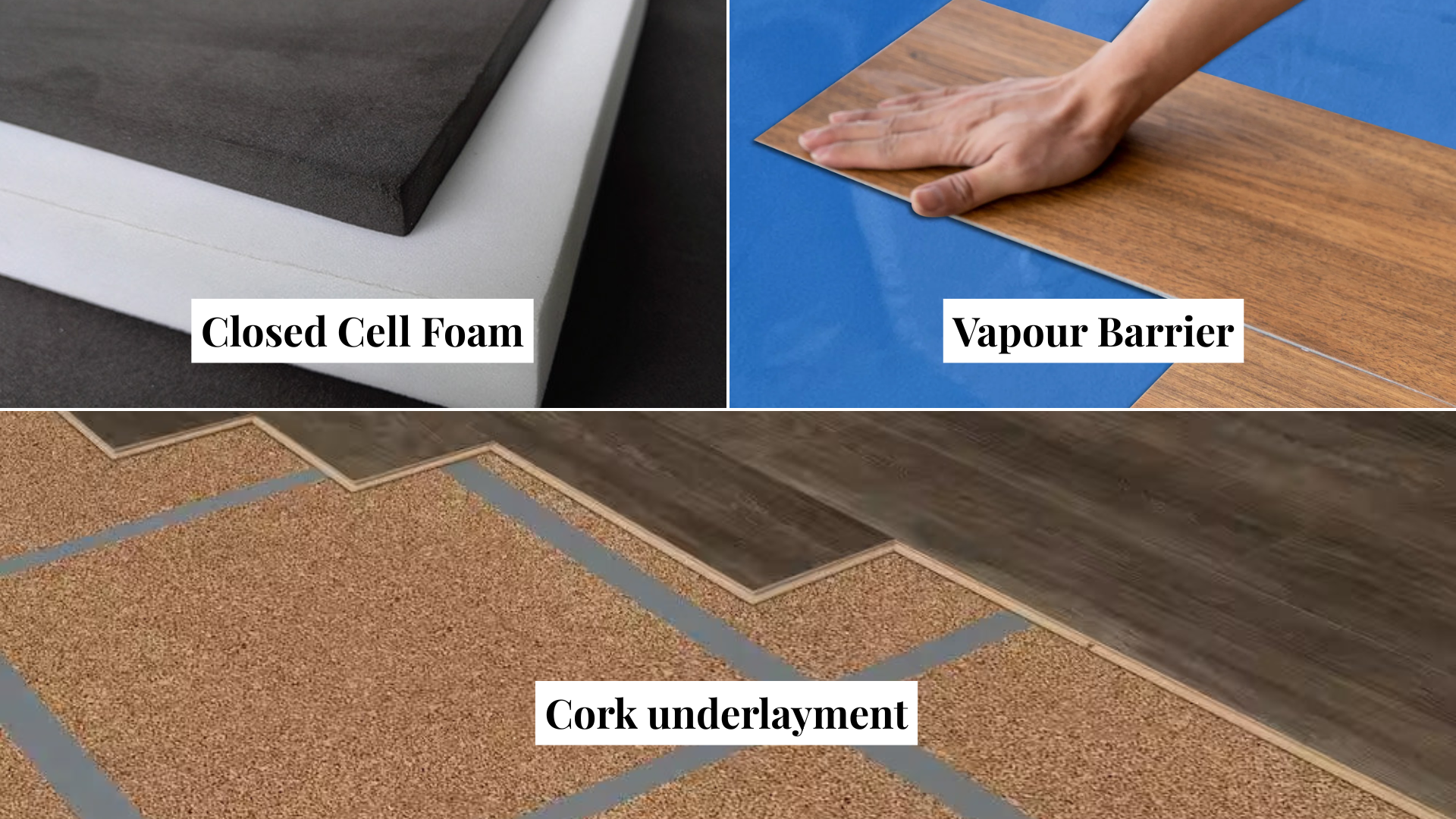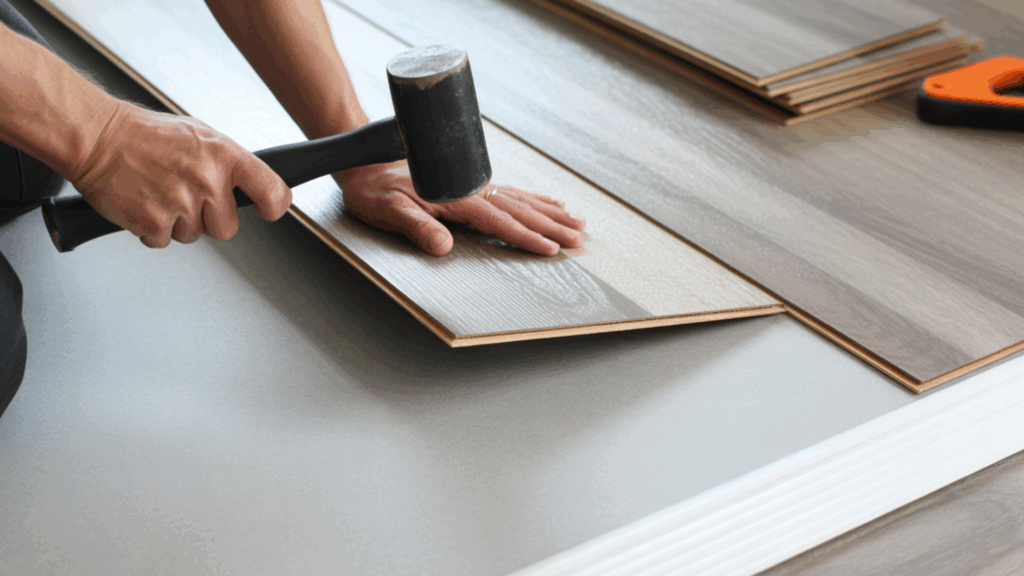When I was picking out new flooring, I realized how confusing things can be, especially with so many options.
One question that kept coming up for me was whether I needed underlayment for vinyl flooring that already had a pad attached.
At first, I thought the attached pad would be enough. But the answer isn’t always that simple.
In some cases, adding extra underlayment can actually help, but in others, it might cause problems.
It really depends on the type of subfloor I’m working with, the room I’m installing it in, and what the flooring brand recommends.
In this blog, I’ll explain everything clearly and walk you through what an attached pad does, when you might want more underlayment, and how I made the best choice for my home.
What Is Vinyl Flooring with an Attached Pad?

Vinyl flooring with an attached pad is a type of flooring that comes with a built-in underlayment already attached to the back of each plank or tile.
This pad is usually made from materials like foam, cork, or rubber, and it’s designed to provide extra comfort, reduce noise, and make installation easier.
This kind of flooring is especially popular for DIY projects because it clicks together easily and doesn’t require many extra tools or materials.
The attached pad gives the floor a softer feel underfoot, making it more comfortable to walk on, especially in rooms where you spend a lot of time standing.
However, not all pads are created equal. Some are basic and may not offer the same benefits as a separate underlayment.
That’s why it’s important to understand what your flooring comes with and whether it meets your space’s needs.
Do You Need Additional Underlayment with Attached Pad Flooring?
One of the most common questions people ask when installing vinyl flooring with an attached pad is, “Do I still need to add underlayment?” The short answer is: It depends.
While it might seem like the attached pad is doing all the work, there are times when extra underlayment could still be helpful, or even necessary.
Underlayment is a thin layer that sits between your subfloor (the surface below your flooring) and the floor itself.
Even if your vinyl planks already have a pad attached, an extra underlayment can add more benefits if used in the right way.
Some of the main jobs the underlayment does are:
- Adds cushioning: Makes the floor feel softer and more comfortable when you walk on it.
- Reduces noise: Helps block sound from traveling between floors or rooms.
- Smooths out small bumps: If your subfloor isn’t perfectly even, underlayment can help level it.
- Protects from moisture: Some underlayments have moisture barriers that stop water from coming up through the concrete.
- Improves warmth: Adds a little insulation, which can keep your floors from feeling too cold.
Factors Influencing the Need for Extra Underlayment

Even if your vinyl flooring comes with an attached pad, you might still need extra underlayment in certain cases.
Whether or not you should add more depends on several key factors.
1. Type of Subfloor
Your subfloor is the surface underneath your flooring. Different subfloor types need different support.
- Concrete Subfloors: Concrete can let moisture rise up into your flooring. If your attached pad doesn’t have a built-in moisture barrier, you might need to add one underneath to protect against water damage.
- Wood Subfloors: Wood doesn’t need a moisture barrier like concrete does, but it still needs a smooth, level surface. If your wood subfloor has bumps or dips, an underlayment can help even it out.
2. Moisture Levels in the Room
Some rooms deal with more moisture than others. It’s important to consider this before skipping underlayment.
- Basements: Basements tend to be damp, so adding a moisture barrier is usually a smart move.
- Bathrooms and Laundry Rooms: Water spills and steam are common in these areas. Check if your flooring’s attached pad includes water protection. If not, an extra layer might help.
3. Location in the Home
Where your floor is located also matters.
- First Floor: If your home is built on a slab or has crawl space issues, added moisture protection could be helpful.
- Second-floor or Upstairs Apartments: Noise travels more between floors, so extra sound padding might be a good idea, if your flooring brand allows it.
4. Noise Concerns
If you want a quieter space, especially in multi-level homes, sound control can be important.
- For Bedrooms or Kids’ Rooms: A quieter floor might make a big difference.
- For Multi-Unit Buildings: You might need to meet certain sound-rating rules (like IIC or STC ratings), and that could mean using extra underlayment—even with an attached pad.
5. Climate and Temperature
Where you live and the temperature inside your home can also affect your flooring.
- Cold Climates: If your home gets cold in the winter, an added underlayment layer can help keep your floors from feeling freezing.
- Consistent Indoor Temps: If you use radiant floor heating or maintain steady indoor temperatures, your flooring may not need much extra help, but double-check your flooring brand’s advice first.
Always read the flooring instructions and check with the manufacturer. What works for one type of flooring might not be okay for another.
Understanding your needs now can help you avoid problems later.
Best Underlayment Options for Vinyl Flooring

When vinyl flooring doesn’t come with an attached pad or when extra support is needed, choosing the right underlayment is important.
The best options are thin, firm, and made to work with vinyl’s locking system.
One popular choice is closed-cell foam, which offers comfort, sound reduction, and basic moisture protection.
For areas with more moisture, like basements, a vapor barrier underlayment under a foam layer works well.
If sound is a concern, especially in multi-level homes or apartments, cork underlayment is a great pick because it reduces noise and adds a soft feel.
Just make sure it’s rated for use with vinyl.
Avoid using thick, soft, or carpet-style underlayments, as these can cause vinyl planks to shift or break.
Always check the flooring manufacturer’s guidelines before choosing your underlayment.
Pros and Cons of Using Additional Underlayment

If you’re thinking about adding underlayment beneath your vinyl flooring that already has an attached pad, it’s smart to weigh the good and the bad.
In some situations, extra underlayment can be helpful. But in others, it may do more harm than good.
| Pros | Cons |
|---|---|
| Adds extra comfort and softness | It may make the floor feel too soft or spongy |
| Helps reduce noise between floors | It can interfere with the locking system |
| Offers more insulation (warmer floors) | It might trap moisture if not installed correctly |
| Adds a moisture barrier (if needed) | Increases the cost of materials and labor |
| Can help meet sound rating requirements | Could void the flooring warranty |
As you can see, extra underlayment has both benefits and risks. The key is to understand your flooring product and your home’s needs.
If your floor already has a quality attached pad, adding more might not be necessary, and could even cause problems.
Always check the product’s instructions and talk to a flooring pro if you’re unsure. Making the right choice now can save you time, money, and stress later.
Alternatives to Additional Underlayment
If your vinyl flooring already has an attached pad, you might not need to add another layer underneath.
In fact, there are a few smart alternatives that can give you the support or protection you need, without the risk of damaging your floor or voiding the warranty.
- Use a vapor barrier only: Great for concrete subfloors that need moisture protection without extra padding.
- Choose premium vinyl with high-quality attached pads: Some floors come with upgraded pads that already handle sound, moisture, and comfort.
- Install directly over an approved subfloor: If your subfloor is smooth and clean, you might not need anything extra.
- Spot-fix uneven subfloor: Use patching compounds or floor levelers instead of full underlayment.
These alternatives can help you achieve the performance you want without the risks of adding extra layers.
Always follow your floor’s design and choose simple solutions that fit your space and subfloor. When in doubt, less is often more!
Conclusion
Whether or not to use extra underlayment with vinyl flooring that has an attached pad depends on your specific situation.
In many cases, the attached pad is enough, especially if your subfloor is smooth and dry and the flooring brand says it’s okay.
But in areas with moisture, noise concerns, or uneven subfloors, you might still need something extra, like a vapor barrier or leveling compound.
The key is always to read the manufacturer’s instructions and consider your space’s needs.
Adding the wrong type of underlayment, or using too much, can cause damage or even void your warranty.
On the other hand, skipping underlayment where it’s really needed could lead to problems later on.
When in doubt, talk to a flooring expert or reach out to the flooring company. Taking a little time to check now can save you a lot of trouble later.

